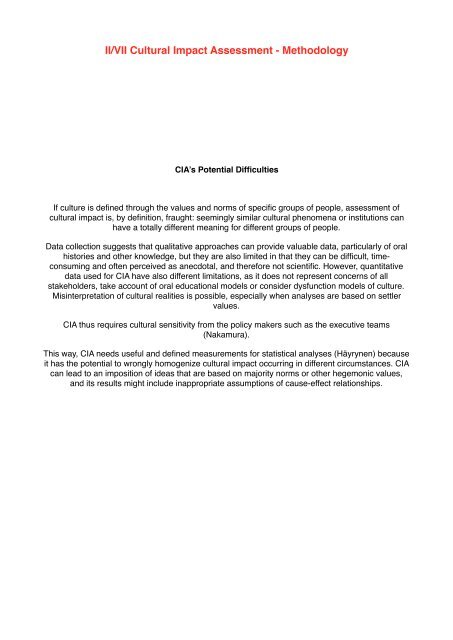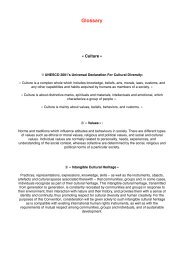Awareness Trainings - Draft #1
You also want an ePaper? Increase the reach of your titles
YUMPU automatically turns print PDFs into web optimized ePapers that Google loves.
II/VII Cultural Impact Assessment - Methodology<br />
CIA’s Potential Difficulties<br />
If culture is defined through the values and norms of specific groups of people, assessment of<br />
cultural impact is, by definition, fraught: seemingly similar cultural phenomena or institutions can<br />
have a totally different meaning for different groups of people.<br />
Data collection suggests that qualitative approaches can provide valuable data, particularly of oral<br />
histories and other knowledge, but they are also limited in that they can be difficult, timeconsuming<br />
and often perceived as anecdotal, and therefore not scientific. However, quantitative<br />
data used for CIA have also different limitations, as it does not represent concerns of all<br />
stakeholders, take account of oral educational models or consider dysfunction models of culture.<br />
Misinterpretation of cultural realities is possible, especially when analyses are based on settler<br />
values.<br />
CIA thus requires cultural sensitivity from the policy makers such as the executive teams<br />
(Nakamura).<br />
This way, CIA needs useful and defined measurements for statistical analyses (Häyrynen) because<br />
it has the potential to wrongly homogenize cultural impact occurring in different circumstances. CIA<br />
can lead to an imposition of ideas that are based on majority norms or other hegemonic values,<br />
and its results might include inappropriate assumptions of cause-effect relationships.




